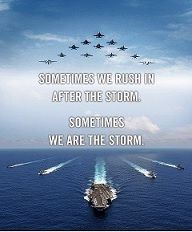Posted: September 25, 2014 3:35 PM
Destroyer Zumwalt Completes Generator Light-Off
BATH, Maine — The Navy’s Zumwalt-class (DDG 1000) destroyer program continues to make significant progress achieving key shipbuilding milestones, completing ship generator light-off on Sept. 23, for the first-of-class ship, the future USS Zumwalt, a Naval Sea Systems Command spokesman said in a Sept. 25 release.
The lead ship, DDG 1000, is 92 percent complete and currently in the test and activation phase of construction at General Dynamics, Bath Iron Works. The ship is successfully activating its fuel systems, advanced induction motors (AIM) and generators with fuel onload and AIM light-off completed in July. The generators are used to produce the electricity required to operate the ship — the first Navy surface combatant to employ and innovative Integrated Power System (IPS). Key design features that make the IPS architecture unique include the ability to provide power to propulsion, ship’s service and combat system loads from the same gas turbine generators.
“Light-off of DDG 1000’s generators is a critical step forward in the activation, test and trials of the ship’s systems,” said CAPT Jim Downey, the Navy’s DDG 1000 program manager. “With deliberate and incremental test and activation, the DDG 1000 team is systematically retiring risk and preparing this highly complex ship for at-sea testing and eventual transfer to the fleet.”
Completion of generator light-off represents the latest electrical system milestone in an effort that began years ago with early prototype testing at the Naval Ships Systems Engineering Station Land Based Test Site in Philadelphia. Lessons learned from this effort guided activation events onboard DDG 1000 including energizing the high voltage power system, lighting off the port AIM utilizing shore power to demonstrate operation of the propulsion motor system, and continual testing of the engineering control system responsible for the automated control of the engineering plant. Most recently, successful testing of the fuel oil service and transfer system allowed for the onload of fuel utilized in the light-off event.
Test and activation of the ship’s systems will steadily continue, with activation of the ship’s computer system, the Total Ship Computing Environment planned for later this fall. Zumwalt will begin at-sea testing in 2015 off the coast of Maine and is expected to arrive in San Diego in the 2016 timeframe for an extensive period of operational integration with the fleet.
SEAPOWER Magazine Online
Destroyer Zumwalt Completes Generator Light-Off
BATH, Maine — The Navy’s Zumwalt-class (DDG 1000) destroyer program continues to make significant progress achieving key shipbuilding milestones, completing ship generator light-off on Sept. 23, for the first-of-class ship, the future USS Zumwalt, a Naval Sea Systems Command spokesman said in a Sept. 25 release.
The lead ship, DDG 1000, is 92 percent complete and currently in the test and activation phase of construction at General Dynamics, Bath Iron Works. The ship is successfully activating its fuel systems, advanced induction motors (AIM) and generators with fuel onload and AIM light-off completed in July. The generators are used to produce the electricity required to operate the ship — the first Navy surface combatant to employ and innovative Integrated Power System (IPS). Key design features that make the IPS architecture unique include the ability to provide power to propulsion, ship’s service and combat system loads from the same gas turbine generators.
“Light-off of DDG 1000’s generators is a critical step forward in the activation, test and trials of the ship’s systems,” said CAPT Jim Downey, the Navy’s DDG 1000 program manager. “With deliberate and incremental test and activation, the DDG 1000 team is systematically retiring risk and preparing this highly complex ship for at-sea testing and eventual transfer to the fleet.”
Completion of generator light-off represents the latest electrical system milestone in an effort that began years ago with early prototype testing at the Naval Ships Systems Engineering Station Land Based Test Site in Philadelphia. Lessons learned from this effort guided activation events onboard DDG 1000 including energizing the high voltage power system, lighting off the port AIM utilizing shore power to demonstrate operation of the propulsion motor system, and continual testing of the engineering control system responsible for the automated control of the engineering plant. Most recently, successful testing of the fuel oil service and transfer system allowed for the onload of fuel utilized in the light-off event.
Test and activation of the ship’s systems will steadily continue, with activation of the ship’s computer system, the Total Ship Computing Environment planned for later this fall. Zumwalt will begin at-sea testing in 2015 off the coast of Maine and is expected to arrive in San Diego in the 2016 timeframe for an extensive period of operational integration with the fleet.
SEAPOWER Magazine Online



Comment